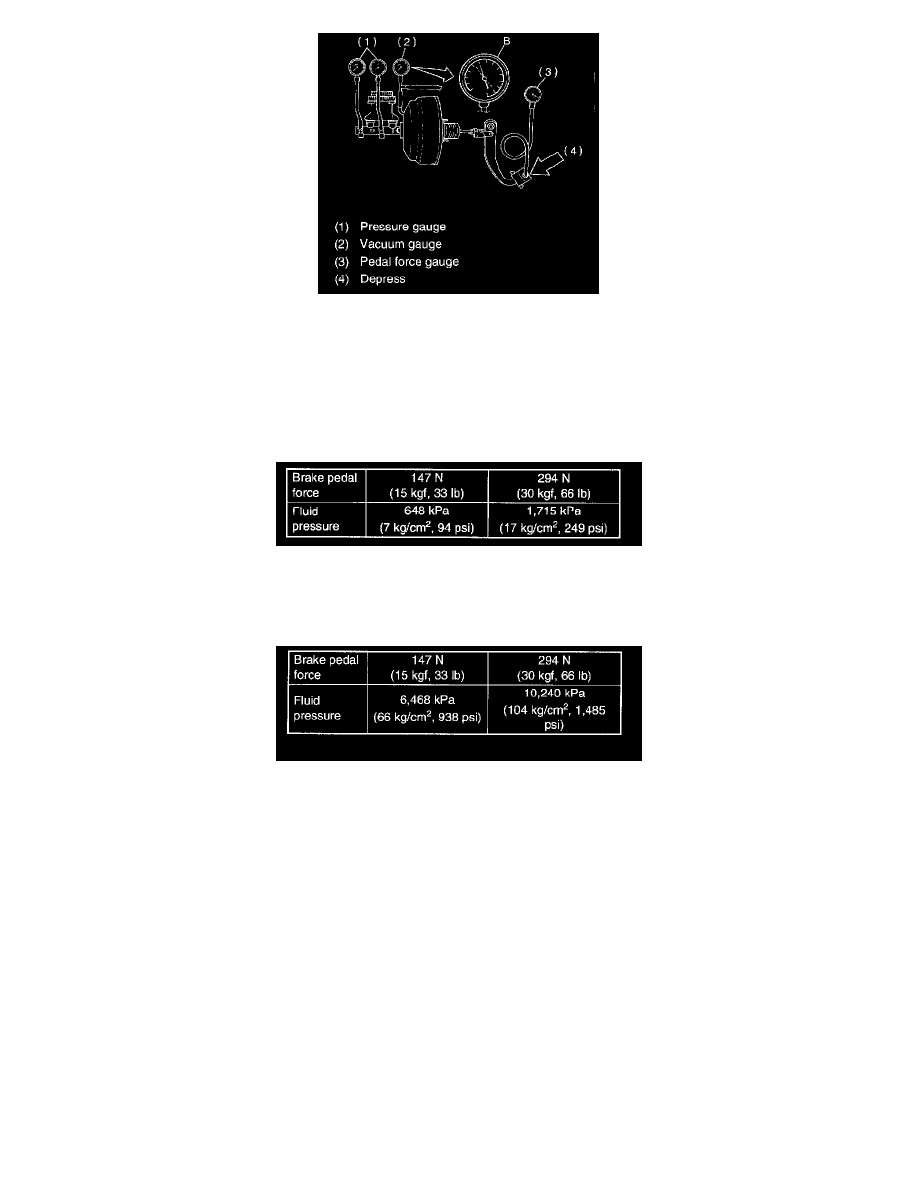Forester F4-2.5L SOHC (2004)

1) Start the engine and depress brake pedal with pedal force of 196 N (20 kgf, 44 lbs.). Keep the engine running until a vacuum of 66.7 kPa
(500 mmHg, 19.69 inHg) = point B is indicated on vacuum gauge while the pedal is still depressed.
2) Stop the engine and watch vacuum gauge.
If the vacuum drop range is less than 3.3 kPa (25 mmHg, 0.98 inHg) within 15 seconds after stopping engine, the brake booster is functioning
properly. If defective, refer to "AIR TIGHTNESS CHECK". <Ref. to INSPECTION, Brake Booster.>
3) If any fault is found on brake booster, replace the brake booster with a new one.
^
Lack of boosting action check
Turn off the engine, and set the vacuum gauge reading at "0". Then, check the fluid pressure when brake pedal is depressed. The pressure must
be greater than the standard value listed.
^
Boosting action check
Set the vacuum gauge reading at 66.7 kPa (500 mmHg, 19.69 inHg) by running engine. Then, check the fluid pressure when brake pedal is
depressed. The pressure must be greater than the standard value listed.
